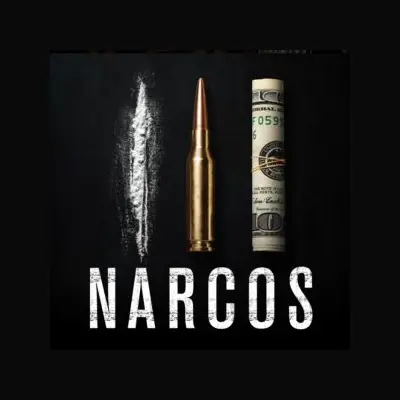Narcos: Mexico proves it's one of TV's most underrated dramas and a "downbeat triumph" in its third and final season
-

"Over the course of five seasons, Narcos and Narcos: Mexico have been as bleak—and consistently great—as anything on television, and that holds true for the latter’s closing run, which solidifies the series’ standing as the definitive drama about the 1970s-1990s drug trade. Set in the lush jungles, arid deserts, and sweltering metropolises of South America and Mexico, Netflix’s trafficking saga is a jet-black neo-noir driven by a despondency that knows no bounds," says Nick Schager. "As always, there’s scant uplift here—just an overarching recognition that there’s no hope for justice, for peace, for answers, for absolution, or for the monstrous horrors of the world to ever truly be vanquished. For all of its thrills and intrigue, Narcos: Mexico’s third go-round is a fatalistic nightmare marked by a pervasive sense of disconnection. In the early 1990s, with kingpin Miguel Ángel Félix Gallardo (Diego Luna) now behind bars after failing to unite the country’s rival cartels, pilot-turned-Juarez boss Amado Carrillo Fuentes (the magnetic José María Yazpik) concocts a revolutionary way to evolve the business: separate each facet of his trafficking operation, so that if one cog breaks down or gets caught, the larger machine keeps on running. Amado’s strategy gives new meaning to “divide and conquer,” and for a time, it works like a charm, as does his plan to halt any dealings with his adversaries in Tijuana and Sinaloa. Remaining independent, however, is almost as impossible as successfully collaborating with his fellow greedy cartel dons, thus underlining the catch-22 that propels much of the show’s entangled action...In the final tally, Narcos: Mexico isn’t just an epic about a broken and irredeemable system, a vain anti-drug enterprise, or the predictable treachery of criminals and governments—it’s a multinational portrait of individuals obsessed with greed, power, guilt and a self-destructive desire to make things better, even when those efforts are destined to come up short. As it ends its acclaimed small-screen run, it provides neither a happy ending nor any easy resolutions, instead staying true to the dark, grim perspective on the world, and the human heart, that’s made it such a downbeat triumph."
ALSO:
- Co-creator Carlo Bernard, who became Narcos: Mexico's showrunner, says the final season will set up for viewers an understanding of the globalization of the drug war today: “I saw this season as an origin story of the modern world that we live in,” explains Bernard. “For me, it felt like bringing the show up to that spot where we now recognize, for better or for worse, made sense as a place to stop it. The show has been able to lift the curtains and show you how this thing began, how it evolved. Not to say that other stories wouldn’t be compelling going forward. But to me, stopping at the moment where we had delivered the world that we now live in today made sense, thematically and narratively.”
- How rapper Bad Bunny ended up in Narcos: Mexico's final season: “When we were writing the season, I was told that Bad Bunny wanted to be on the show,” says co-creator Carlo Bernard. “And I knew it was a big deal because my assistant was so excited. That’s when I realized we should definitely be doing this. We had to try to find a way to figure out his schedule, and he was great about trying to shift things around so he could spend as much time with us as possible.”
- Original Narcos star Wagner Moura talks returning as director of two "huge" episodes: "My film is mix of genres, but it has a lot of action in it," Moura says of returning as a director. "And I think Carlo thought that the way I directed those scenes was something that he was looking for, because like you said, we have the shootout at the dance club and the other one at the airport. When I'm shooting scenes like that, I'm not thinking about the show, the action, the violence, the explosions. I'm thinking about what's going on with those characters when they're under a shootout, or while they are doing those things. And also, too, I think I brought to the show a feeling of the first seasons where we were hand-holding the camera a lot more than in Narcos: Mexico. There was slight change where they were doing it more classy. And I think that on my episodes I was trying to connect my participation and to bring back some of the high static of Narcos: Colombia, which was very, very close to the characters and looking for them with the camera more alive than what was going on with Narcos: Mexico, which is beautiful but different."
- Alejandro Edda, who plays El Chapo, recalls attending his real-life counterpart's trial to prepare for his role: “He looked at me, and smiled, then went like this,” said Edda, imitating El Chapo's broad grin and waving in an interview with Vice News. “I didn't even blink. I just looked at him, staring. It was just like, ‘oh sh*t, this just happened.’”
- Luis Gerardo Méndez calls playing a bordertown cop "one of the most complex characters I've ever done"
TOPICS: Narcos, Netflix, Alejandro Edda, Bad Bunny, Carlo Bernard, Luis Gerardo Méndez, Wagner Moura
